Bad kitchen lighting can lead to all manner of mishaps. Perhaps you’ve struggled to notice the fly swimming in your soup as you serve it unknowingly at a dinner party? Maybe you’ve sliced off a portion of your thumb tangling with a mandoline, just as dusk fell? Or, have you been temporarily blinded by a glaring overhead light, dropping your groceries on the floor and smashing a dozen eggs in the process?
We’ve all been there. Whilst some of us are comfortable styling it out, claiming the fly was simply garnish or that we never liked our thumb anyway, the majority will, quite rightly, blame the ill-thought out or insufficient lighting in their kitchen.
Blame no more. Today, we’re exploring how to show your kitchen in its best light, whatever the time of day or occasion.
Make Use Of Natural Light
There is, quite simply, no substitute for the clean, elegant flow of natural light. Able to give the impression of more space and cleanliness, save you on electricity bills, and even lift your mood, there’s no room which benefits more from natural light than the kitchen, whose typically pale, neutral colours respond just perfectly to sunlight.
To encourage more natural light in your kitchen, there are a few simple things you can do. Consider hanging a mirror opposite the main source of natural light, re-paint your kitchen in a bright, reflective shade, and make sure that you’ve no appliances or kitchen ornaments obscuring the window.
We’re also fans of mirror splashbacks. Made from toughened glass, mirror splashbacks designed for the kitchen are heat resistant and completely safe to use behind your hob. Not only do they reflect natural light and make your kitchen look bigger, but their useful for protecting those brightly coloured walls from sauce stains.
Read: The best ways to allow more natural light into your home
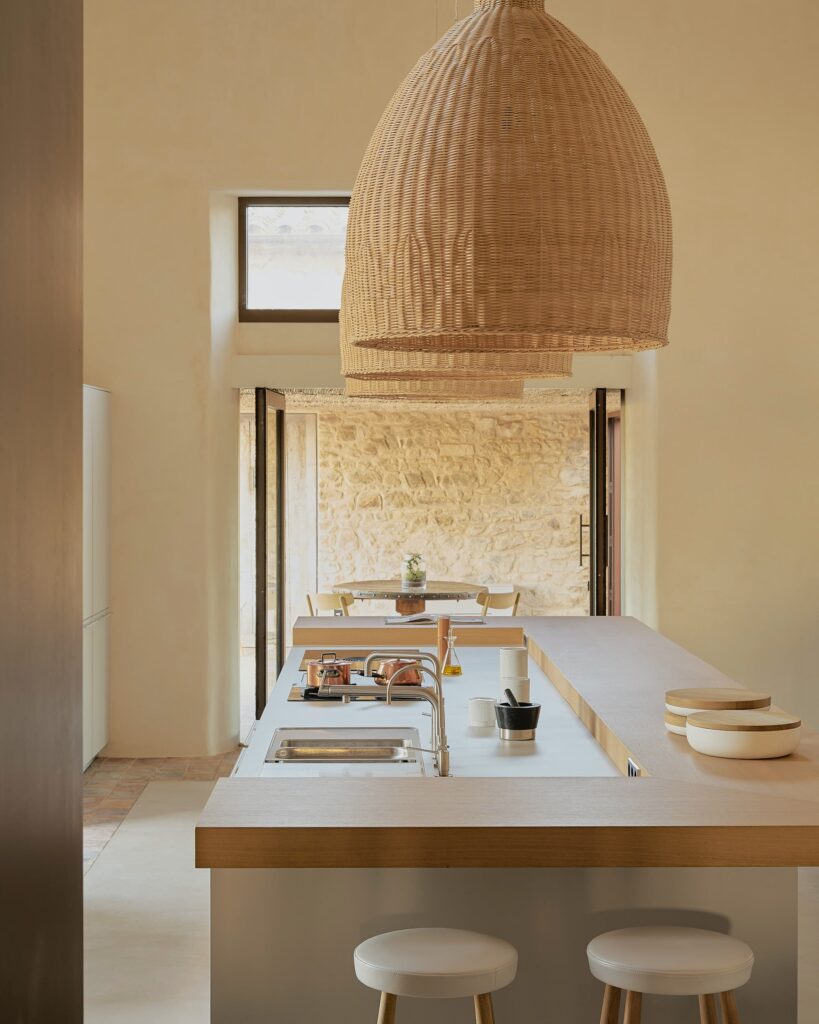
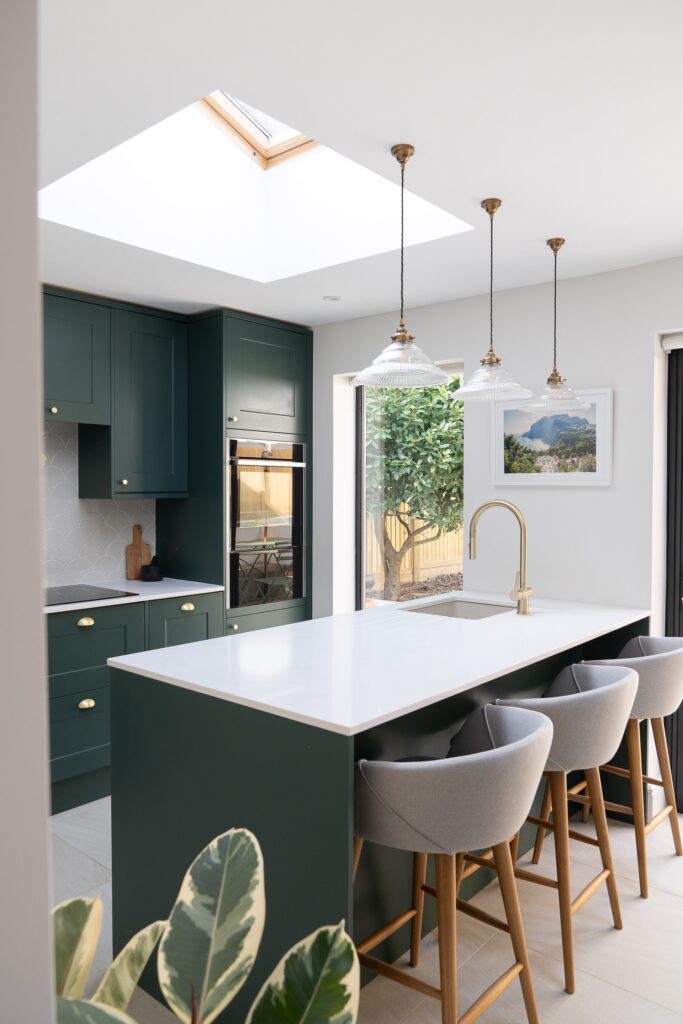
Consider The Way You Use Your Kitchen
For some, the kitchen is a purely functional space; compact, tight and solely used for food prep and storage. For others, however, it’s a space of socialising, soul-nourishment and feeding, where the family gather to right the wrongs of their day and write the plans of their future, all over a delicious home cooked meal.
The way you light your kitchen should inform how you light it. If you use your kitchen for cooking only, then the lighting should be fairly stark and largely overhead, to help you cook with precision.
Should your kitchen be more adaptive, morphing from a study space to a sophisticated dining room, then you’re going to need more room for flexibility. In such cases, consider utilising pendant or accent lights for your kitchen lighting needs, helping you illuminate the tasks or spaces according to the time of day and occasion.

Give Yourself Ambient Options
Okay, so we realise that we just recommended fairly stark lighting for when you’re focused on your cooking. For all other times, however, it’s a good idea to have some ambient lighting options available in your kitchen, to adapt your illumination needs to your mood.
Ambient lights help add personality, warmth, and tenderness to a room which can sometimes feel a little clinical and impersonal. They’re also more effective in reaching out to the room’s darker corners and inviting them to join in.
Floor lamps, table lamps, candles, and recessed lighting are good options, and are visually pleasing to boot. You can use them to give attention to decorative items such as plants, wall art, sculptures, and paintings, as well as to the kitchen gadgets you’re especially proud of!
IDEAL Tip: Lighting objects from behind can help them stand out. Casting indirect light on beautiful objects adds a little extra punch, with the effect of light emitted from below on transparent or translucent things, such as glass, being particularly eye-catching in the kitchen.
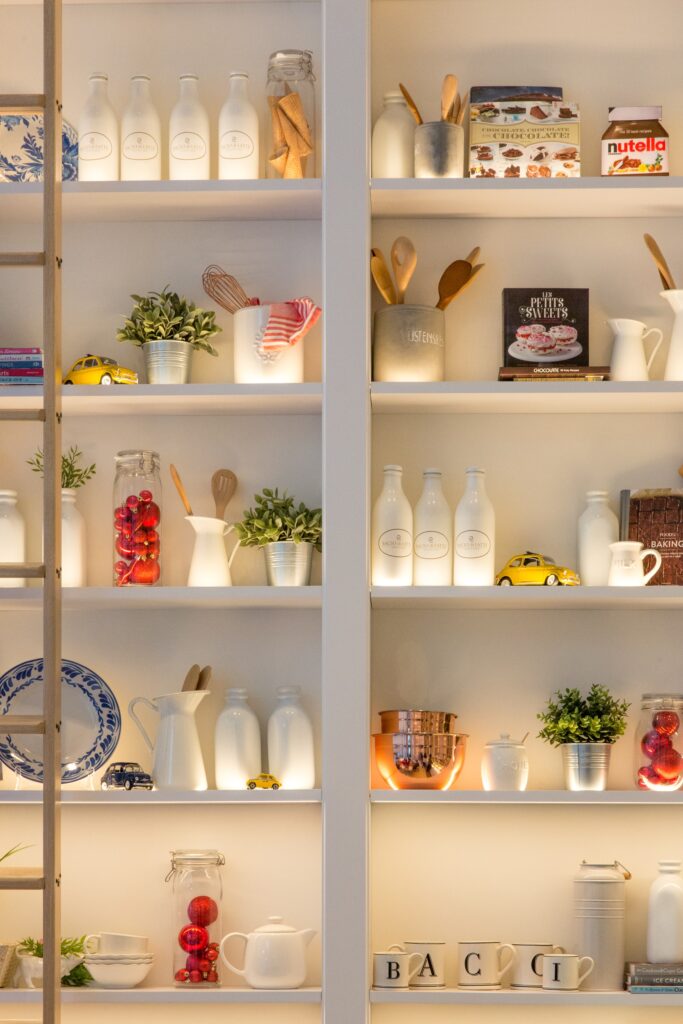
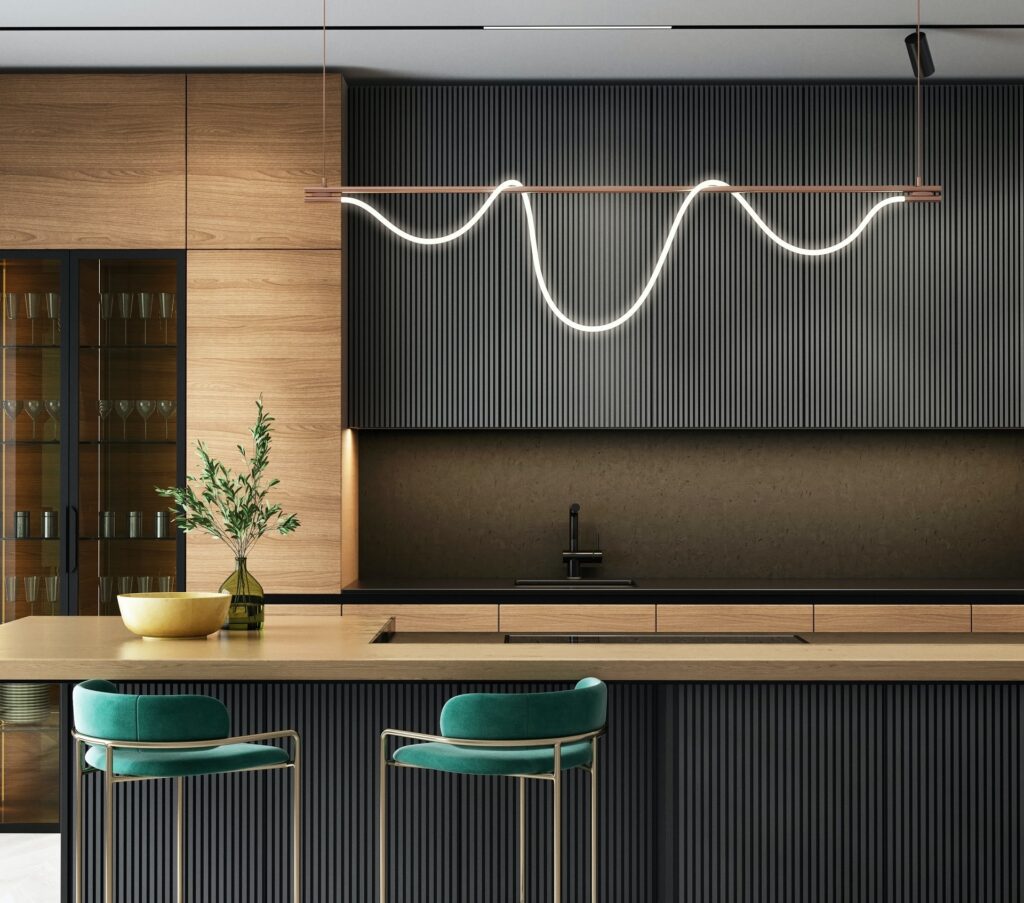
Use A Standout Shade Or Even A Chandelier To Make A Statement
Who says that your kitchen lighting has to be tasteful or muted? A chandelier can instantly transform a space with a bold and often brash statement, but if that’s your thing, then embrace it!
A chandelier isn’t just for fancy stately homes; they actually fit nicely in a kitchen and don’t have to cost a fortune. Able to hang nicely over a dining table or island countertop, they serve as a great centrepiece to complement the room and useful talking point for when dinner party conversation dries up.
Don’t Sacrifice On Quality When It Comes To Kitchen Lighting
Cheap lighting doesn’t last long and can be harmful to your eyes in its harshness, particularly in a room with more reflective surfaces than most. On top of that, cheap lighting can often lack a little nuance, showing those sauce stains on your walls in their worst light. Which no one wants, quite frankly…
When picking the right lighting, you should focus on something called CRI – the Colour Rendering Index. It tells you how different colours can appear under the light source. It’s generally considered best by industry insiders to go for lighting with a CRI rating starting from 80.
Focus On Task Lighting For Work Zones
While ambient lighting sets the mood, task lighting is the workhorse of kitchen illumination. Under-cabinet LED strips are perhaps the most transformative addition you can make – they eliminate shadows on your countertops, making chopping, measuring, and reading recipes infinitely easier. Position them toward the front edge of cabinets to avoid glare on glossy surfaces.
Consider adding dedicated task lights above your sink and stove area too. A small pendant or adjustable spot above the sink makes washing up less of a squint-fest, while proper range hood lighting ensures you can actually see whether your onions are caramelising or carbonising. The key is layering these focused lights with your ambient options, so you’re never working in your own shadow.
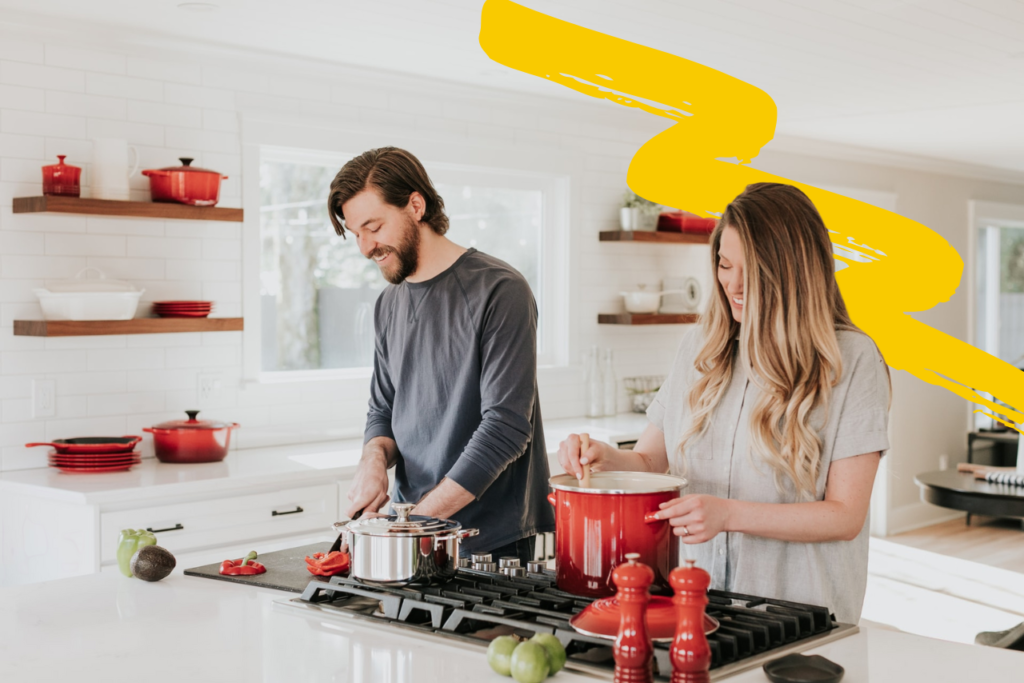
Embrace Dimmers & Smart Controls
The difference between a kitchen that works and one that truly lives is often down to a simple dimmer switch. Installing dimmers on your main lights transforms your kitchen from a bright workspace to an intimate dining area with a simple slide. It’s particularly effective with pendant lights over islands or dining areas.
Smart lighting takes this flexibility further – you can program “scenes” for different times of day or activities. Bright and cool for morning coffee and meal prep, warm and subdued for evening entertaining. Many systems now work with voice controls, meaning you can adjust lighting with messy hands mid-cooking. Yes, it feels unnecessarily futuristic at first, but once you’ve dimmed the lights for dinner without leaving the stove, you’ll never go back.
Why Brand Matters
After sorting your lighting plan, you’ll face a sea of options at wildly different price points. While it’s tempting to grab the cheapest fixture that fits your style, lighting is one area where brand reputation genuinely translates to daily satisfaction. Good manufacturers understand not just aesthetics but also heat management, color consistency, and longevity – factors you’ll appreciate every time you flip the switch.
Laura Ashley – Laura Ashley lighting brings a designer’s eye to the kitchen without the designer price tag. Their strength lies in creating pieces that feel considered rather than generic – a pendant that complements your cabinet handles, or a ceiling fixture that echoes your kitchen’s architectural details. Their proportions are consistently spot-on, which matters more than you might think when you’re living with a light day in, day out.
Dar Lighting – Dar has carved out a niche for those who want to follow trends without committing their entire renovation budget. They’re particularly good at translating high-end looks – think ribbed glass shades or aged brass finishes – into accessible pieces. If you’ve spotted a look in a magazine that’s beyond your budget, Dar often has something remarkably similar that won’t require a second mortgage.
Endon – A little different, Endon occupies the practical middle ground, producing lighting that simply works. Their under-cabinet LEDs are properly sealed against kitchen steam, their pendants hang at adjustable heights, and their fittings come with all the hardware you actually need. It’s the kind of thoughtful engineering that becomes apparent six months in, when everything still works perfectly despite daily use.
The right brand choice depends on your priorities – design heritage, trend-consciousness, or bulletproof reliability. What matters is choosing intentionally rather than defaulting to whatever’s on sale. Good kitchen lighting should outlast several rounds of repainting and survive countless dinner parties. It’s worth taking the time to get it right.
The Bottom Line
Natural light is beneficial to your health and well-being, but that does not deny the importance of artificial lighting, either. Adequate light and brightness are necessary for a positive mood and increased vitality throughout the day. As a result, don’t feel obligated to compromise your taste for functionality or vice versa. You can easily have the best of both worlds with so many lighting choices in the industry.





